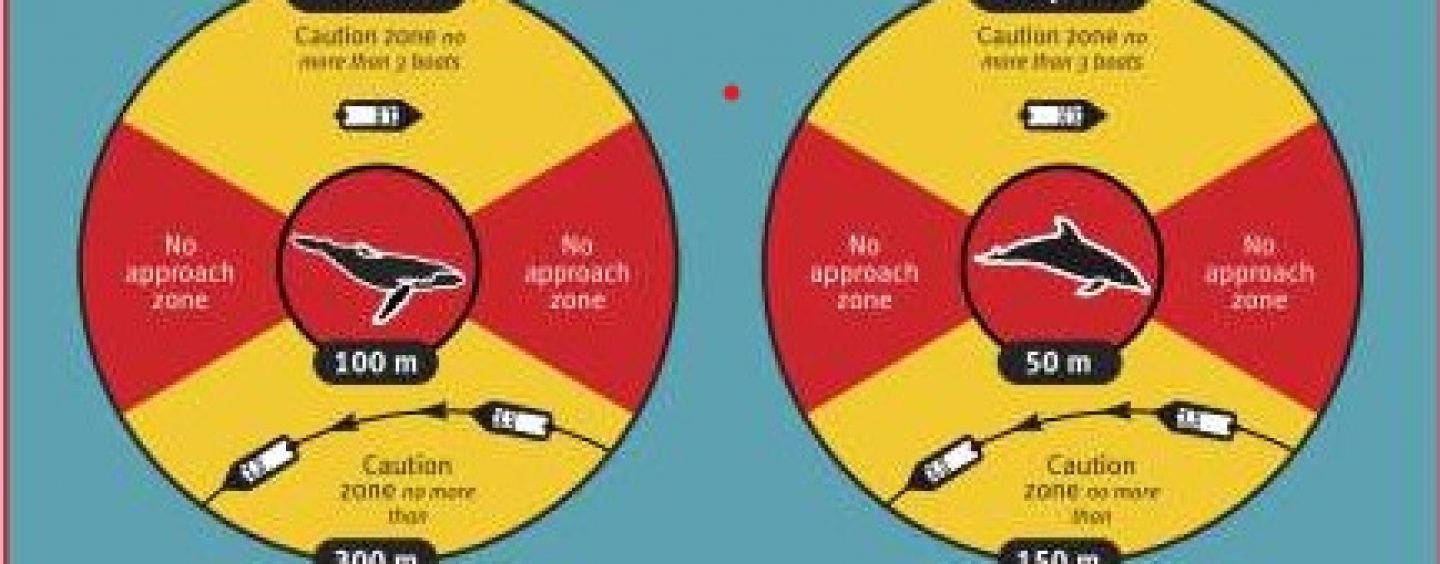There are a number of rules that are in place to make sure marine mammals can live naturally in Queensland waters without being disturbed, while at the same time allowing us to watch them in safety.
Approach distances reduce the risk of disturbing whales or dolphins. They apply to boats (including kayaks and paddle boards), prohibited vessels (e.g. jet skis and hovercraft), aircraft, remotely piloted aircraft (e.g. drones), helicopters and people who are in the water. Approach distances for dugongs only apply where a special management declaration has been made. Approach distances are divided into caution zones and no approach zones.
The caution zone is an area surrounding a whale or dolphin in which boats cannot travel at speeds of more than six knots or speeds that create a wake. The caution zone extends out to 300 metres from a whale, and 150 metres for a dolphin.
Within a caution zone there are areas designated as ‘no approach’ zones that boats cannot enter. These are the areas closest to an animal and directly in front of and behind an animal. For a whale, the no approach zone surrounds the animal for 100 metres and extends 300 metres in front of and behind the animal. For dolphins, the no approach zone surrounds the animal for 50 metres and extends 150 metres in front of and behind the animal.
Something to think about – A fully loaded semi-trailer weighs 36 tonnes. A fully-grown humpback whale weighs up to 45 tonnes. You wouldn’t stand in front of a moving semi-trailer, so why would you put your boat in the way of a whale?
The ‘3-boat rule’ – A boat cannot enter a caution zone if three boats are already present within the caution zone of an animal. If there are boats waiting to enter a caution zone, boats inside the zone should ‘share the water’ by moving away after they have had an opportunity to watch a whale or a dolphin.
If a whale approaches a boat so that the boat is within the caution zone, the boat must not operate at a speed more than six knots or at a speed that creates a wake. If a whale approaches a boat so that the boat is within the no approach zone, the operator of the boat must turn its engines off or disengage its gears, or withdraw from the no approach zone at a speed that is less than six knots and doesn’t create a wake.
If a dolphin approaches a boat within the caution zone or the no approach zone, a moving boat can continue on its way as long as any change in speed or direction is made gradually in a way that is unlikely to disturb the dolphin, particularly if it is bow riding. The boat may even slow down or stop to watch the dolphin providing it does so in a way that does not disturb it. If a marine mammal shows signs of disturbance (e.g. acting in an aggressive manner) a boat must withdraw beyond the caution zone at a speed that is not more than six knots so as to not create a wake.
Published in print July-September 2023



























